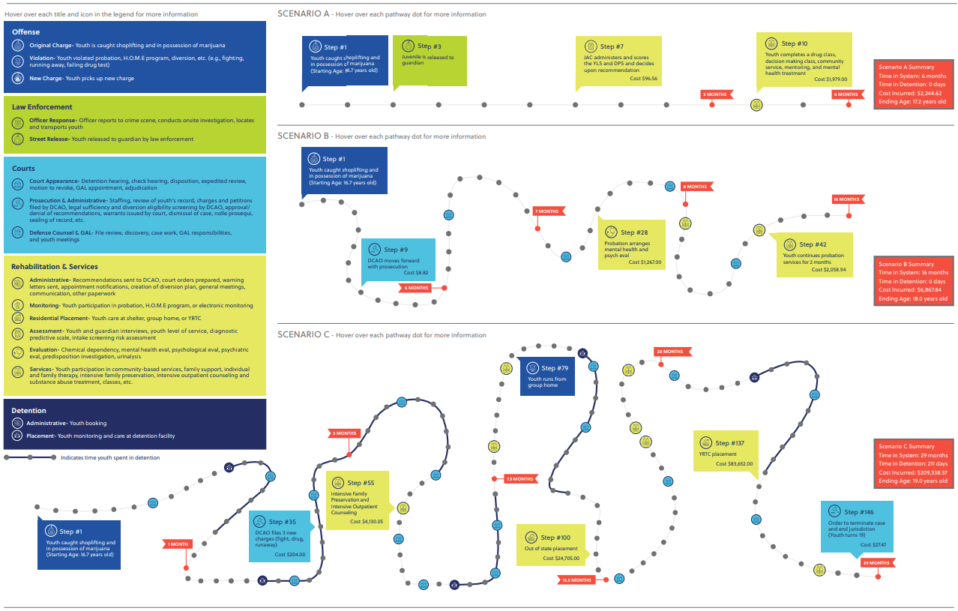The juvenile justice system works to protect public safety, hold youth appropriately accountable for their crimes, and empower youth to become productive, law-abiding citizens. Best practice in juvenile justice recognizes that incarceration is contrary to the best interests and well-being of youth and emphasizes the need for effective and appropriate programming and service alternatives. How the current juvenile justice system operates costs a lot of money and time. The Cost of Juvenile Justice Interactive PDF contains hypothetical pathway scenarios of how three youth with the same offense may move through the juvenile justice system. These youth experience very different paths based on a variety of factors (e.g., technical violations, system decisions). Each step was assigned a broad category (i.e., offense, law enforcement, courts, rehabilitation & services, or detention) and a more specific element (e.g., original charge, court appearance, services). For each pathway, a few descriptive steps were highlighted to show pieces of the story. A dark blue line was also used to indicate the time the youth spent in detention.
These three scenarios demonstrate how current operations of the juvenile justice system’s operations do not serve the best interest of the youth and require high financial investment from the community. Best practice shows that both the youth and community benefit from avoidance of net-widening caused by mismatched punishment severity, the elimination of disproportionate minority contact within the juvenile justice systems, timeliness of response, and expansion of alternatives to detention and out-of-home care.
Click to Download the printable version.




Post a comment